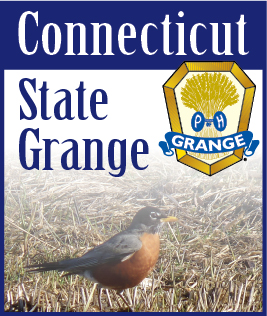| January 17, 2018 -- The topic of solar farm concerns has once again been in the news. When we initially mentioned this topic there were concerns about the loss of prime farmland being used for solar array farms. At that time 1115 acres of woodlands and 510 acres of farmland had been approved for consideration of solar projects. This was partially addressed during the following legislative session when they set some guidelines for the siting of solar array farms. The siting council now needs to consider the loss of farmland and forests when granting the permits for the sites of these solar arrays.
Since last year there are many more towns that are moving toward renewable energy by installing solar panels on schools, town buildings, and other town owned areas. Many households are installing these panels on their rooftops. The state had offered financial incentives for homeowners and many have taken advantage of these incentives.
During the holiday season an article appeared in the paper about the closing on a longstanding Christmas tree farm at the end of this holiday season. The Craftsbury Tree Farm had been in existence for 23 years in Durham. The owner of the trees farm does not own the lands that he had been using to raised his trees on. He has been leasing the land from his cousin who owns a neighboring manufacturing company. The owner had decided that it would be cost efficient for him to use that land for a solar array farm to power his factory and help reduce expenses, plus he would be supporting the green movement. We can’t blame the factory owner for wanting move to solar energy and appreciate his support of renewable energy options. We are also sad to see the loss of an agricultural business.
Another recent article also addressed the siting of solar arrays and brought up another concern. There is a school in Windsor that is planning on installing a three acre solar array on land adjoining forest land. To do so they will need to cut down around two acres of trees that is also a buffer between the school and neighboring houses. The neighbors started questioning the rules and licenses needed for such projects. They were surprised to learn that there really are none. The school only needs a building permit to install the solar array and they don’t even had to go through the zoning and planning commission. There are no guidelines for sites bordering residential neighborhoods. This brings to light the possible need for regulations in local towns concerning renewable energy projects.
Renewable energy sources such as solar and wind are the right direction for clean energy initiatives. We need to remember to balance the installation of these renewable energy installations with the impacts on the community and our agricultural community.
Source for this is Hartford Courant article “Craftsbury Christmas Farm Tradition Coming to an End after 23 Years” by Peter Marteka and Solar Array Scuffle by Steven Goode.
|
